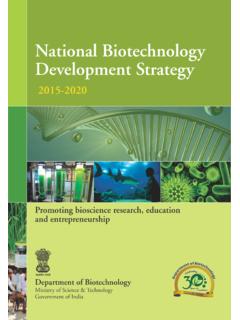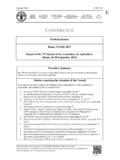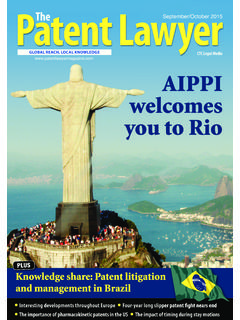Transcription of REPORT - Biotechnology by Amgen
1 BIOSIMILARS TRENDS IN2 015 REPORT2 MESSAGE FROM AmgenMESSAGE FROM EDITORIAL COUNCILINTRODUCTION & EXECUTIVE SUMMARYPAYER PERCEPTIONS OF BIOSIMILARSPAYER READINESS FOR BIOSIMILARSPAYER EXPECTATIONS OF PRICE & ACCESS AS CENTRAL VALUE DRIVERS FOR BIOSIMILARSLOOKING AHEADGLOSSARY4581220364648 TABLE OF CONTENTS3 WHAT ARE BIOLOGICS AND BIOSIMILARS? A biologic medicine is a large molecule derived from living cells that is used to treat or prevent disease, such as a therapeutic protein, DNA vaccine, monoclonal antibody ( , MAB)
2 Or fusion These medicines are far more complex than small molecule drugs and are highly sensitive, making them more difficult to characterize and As more is learned about the biological mechanisms of diseases, new biologic medicines can be developed that target the causes of disease, potentially altering the course of disease rather than treating Biosimilars are biological medicines that are considered highly similar to the originator (the reference product). To be considered a biosimilar, there must be no clinically meaningful differences between the biosimilar and the approved biological product in terms of safety, purity and BIOSIMILARS ARE NOT GENERICS Due to the highly intricate processes associated with translating biologics from living cells to mass production molecules, biosimilars can only be highly similar to their reference ,5 Each step in the manufacturing process, many of which are proprietary to the manufacturer.
3 Requires specific expertise to protect the protein while producing a therapeutically valid treatment. Since the processes differ by company and are not disclosed publicly, biologics cannot be reproduced identically by another payers expect to treat biosimilars as lower-cost branded COLLEAGUES,The global healthcare landscape is experiencing seismic shifts driven by the aging of the population, growing prevalence of non-communicable disease in developing countries as well as dramatic growth in access to pharmaceuticals.
4 At the same time, our industry is setting a path to realize the next phase of the innovation lifecycle in biologic medicine: the introduction and expanding commercialization of biosimilars. Companies like Amgen , who have pioneered the field of study surrounding biologic medicine, now are applying those learnings and principles as we prepare alongside stakeholders for the patent expiry of some of the world s leading biologic medicines and for the launch of the first biosimilars in the healthcare market.
5 We understand that the payers will face many challenges in preparing for the first biosimilars including, but not limited to, coverage policies, Pharmacy and Therapeutics (P&T) evaluation processes, formulary structure, and provider network prescribing guidelines and education. Working alongside an Editorial Council comprised of leading medical and pharmacy directors from across the nation s leading health plans and PBMs, we are proud to share the second edition of the Trends in Biosimilars REPORT . This REPORT is intended to give payers a guide to the latest topics, trends and issues pertinent to biosimilar introduction and adoption in the We hope the 2015 Trends in Biosimilars REPORT is a resource for you and your colleagues as you prepare for the ongoing introduction, adoption and management of biosimilars.
6 We look forward to working along with you in this important step in biologic medicine. Mike Ryan, PharmD Vice President & General Manager, Value, Access and Reimbursement, AmgenMESSAGE FROM Amgen5 DEAR COLLEAGUES,Payers are focused on designing benefit structures that will improve reimbursement, access and quality. Shared risk models with providers and innovative process design are some approaches intended to enhance the quality of care delivered, appropriately align incentives and optimize the costs associated with care.
7 As members of the reimbursement community, we are committed to the transition from the fee-for-service model to an outcomes/value-based model which aligns stakeholders to focus on high quality patient drugs and biologicals are critical components of that mix. With the rapidly approaching commercial introduction of biosimilars in the , payer organizations are actively planning for how biosimilars will be evaluated and managed through medical and pharmacy benefit design as well as coverage structures.
8 We are proud to contribute to the 2015 Trends in Biosimilars REPORT , which brings structure and perspective to some of the most pressing issues that payers are grappling with relative to coverage of biosimilars. This REPORT addresses current data perceptions and assumptions about the market dynamics, preparedness strategies and considerations currently underway, as well as the dynamics of pricing and access as drivers of value for this new category of prescription pharmaceutical drugs. Our intent for the 2015 Trends in Biosimilars REPORT is to address these priority areas to encourage education and dialogue.
9 Furthermore, we believe this is a valuable resource and are proud to bring this REPORT to our peers in the reimbursement community who are making informed decisions regarding the placement of biosimilars within their benefit designs and coverage structures, to ensure the appropriate role of biosimilars in provision of world-class healthcare services. MESSAGE FROM EDITORIAL COUNCILS herry Andes, PharmD, BCPS, BCPP, BCACP, CGP, PAHM Manager, Pipeline & Trend Surveillance Drug Intelligence, CatamaranMichael Boskello Clinical Strategy, Aetna Pharmacy Management, Aetna Cheryl Larson Vice President, Midwest Business Group on HealthElan Rubinstein, PharmD, MPH Principal Consultant, EB Rubinstein AssociatesKenneth L.
10 Schaecher, MD Medical Director, SelectHealthScott Taylor Executive Director, Industry Relations, Geisinger Health SystemEditorial Council members are participating independently and their views may not reflect the interests of their respective companiesThis REPORT offers insights and input from our Editorial Council, comprised of highly experienced medical and pharmacy directors representing the broad mix of managed care organizations throughout the , as well as employer and benefit design consultants.






